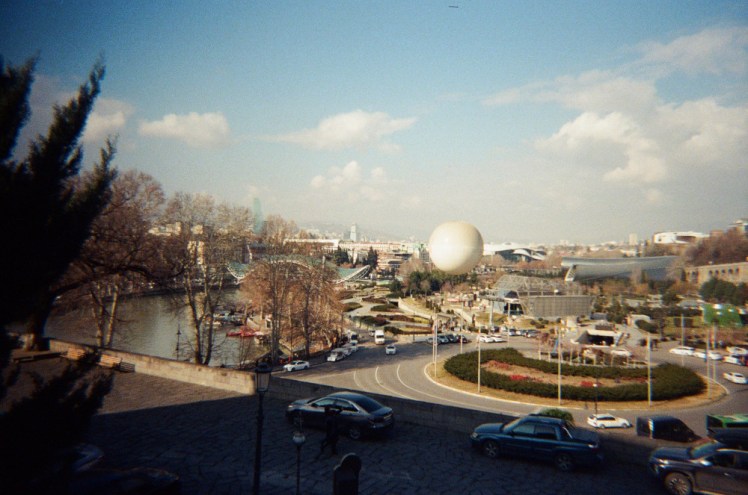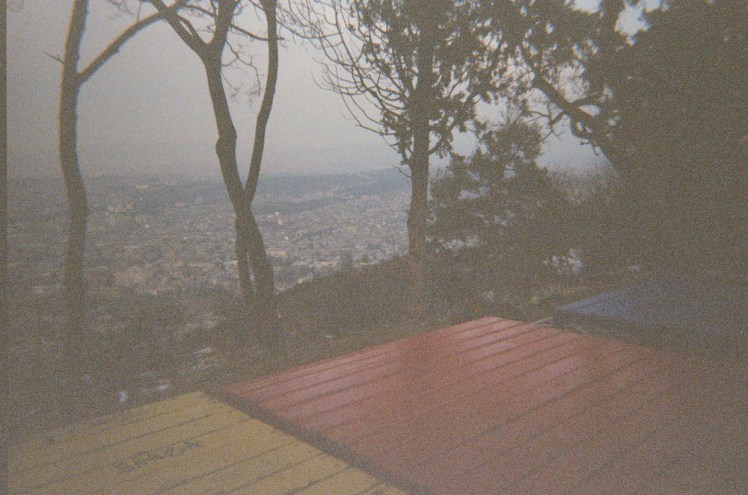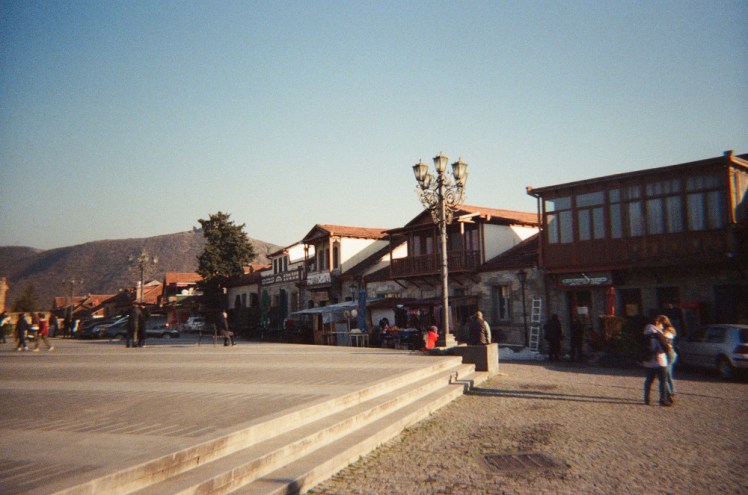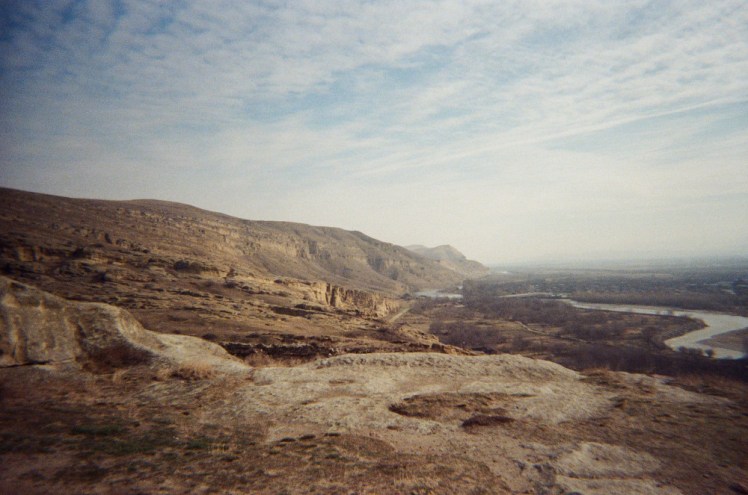It’s the last of the Georgia blogs today. At long last, I think I’ve written every word about Tbilisi and Tserovani and Mtskheta and Uplistsikhe and it’s time for something new. I hope you’ve enjoyed seeing somewhere new and that you’ll consider Tbilisi if you want somewhere new and interesting to go, or if you’re after somewhere with extraordinary food. Today’s final post is the 35mm film photos. I could get the same effect with a filter but I like to take an old-fashioned film camera, take photos, put them in the post and wait to get them back. My camera, admittedly, is a brand new but very cheap and plasticky Kodak camera – my previous eBayed Olympus threw a wobbly in Iceland in February 2022 and is now very unreliable. In the meantime, I found my grandad’s fifty-year-old SLR in the loft which works reasonably well and I’d have liked to take that with me, but the thing weighs 1.3kg, which is a significant chunk of my weight allowance when I’m travelling on hand luggage and I know I’d leave it in the hotel every day because it’s too heavy to want to take out with me. So the lightweight plasticky camera it is.
The other problem with the film camera is that although I carried it every single day, I rarely remember it’s there. It’s in my bag, along with my spare jacket and my notebook and my drink and it’s so easy to forget. I did shove it in my pocket on the first day, at the Chronicle of Georgia, only to discover that there was no film in it, even though I was sure I’d put one in when I sent off my Camp Wildfire photos back in September. Nope. Apparently not. Good thing I took a few spare rolls. Inevitably, I didn’t get any further. I had to take 13 photos to use up the film when I got home. A roll of 24 photos! In spectacular Georgia!
But without any further ado, here are the 14 photos I did remember to take (you never quite know how many pictures you’re actually going to get, even when it says it on the side of the roll):

The view from my balcony, looking towards the newer town and Mtatsminda mountain. I think this one came out ok. This film likes reds, blues and yellows and the red building opposite looks great, especially compared to the end of it that you can’t see, which looks exactly like a bombsite.

Europe Square from Metekhi Church, with a balloon prominent in the centre. This is a bit blue and a bit grainy but otherwise pretty good.

The view from Narikala, looking down at the Peace Bridge, the river and the Old Town. It’s a bit blurry and a bit vignetty around the edges, a bit yellow, but pretty good.

The first failure of the batch. You can clearly see that this is Chreli Abano’s elaborate blue front but it’s far too dark for the film, so the picture is grey and grainy.

The hazy view from Mtatsminda in the early evening. It’s borderline too dark but it was hazy and slightly yellow and not a bad representation of what I was seeing.

Another failure. There were some colourful wooden benches/beds to sit and enjoy the view but it’s just too late and too dark by now and it’s really grey and grainy.

The view down the river at Mtskheta. The riverbank on the right is lovely and golden and I like the way the mountains on the left turn one by one from navy to powder blue. This is ISO 400 at its best – or at least, the best it’s going to get in the hands of such a beginner.

Svetitskhoveli, golden in the late afternoon light, peeking over its wall. The goldens and blues look really good on film.

A look down the side of Svetitskhoveli towards Jvari Monastery on the mountain opposite. The cathedral isn’t at its best because it’s on the shadowed side, so it’s a bit grey and grainy but the bits in the sun are ok.

The centre of Mtskheta looks pretty good on film, though. You can see how low the sun is, touching the square and the tops of the buildings down the right.
 I suddenly remembered at Uplistsikhe that I’d been carrying the camera but not taken it out all day. So this is looking east at a golden mountainside.
I suddenly remembered at Uplistsikhe that I’d been carrying the camera but not taken it out all day. So this is looking east at a golden mountainside.

Straight into the Uplistsikhe complex, with lots of lovely golden light – that’s thanks to the film, not the time of day.

Looking west. Clearly the sun wasn’t pointing this way so it’s not as golden as the others and probably picks up more blue. I think Uplistsikhe looks pretty good on film too.

Last picture, straight into one of the cave structures. We’ve got the golden light again with a bright blue sky. I like it.